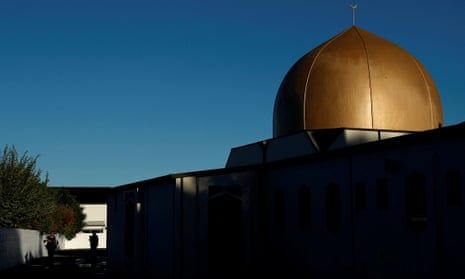Two years ago, Brenton Tarrant, an Australian shooter, entered two mosques in New Zealand and killed 51 Muslims and injured 49. Utilising Facebook’s live-streaming feature, Tarrant recorded the attack, and millions watched the massacre online.
Two years on and this seems to remain the formulaic opening that stories about the Christchurch massacre adopt to introduce the tragedy.
Here’s another way of describing it.
Two years ago, Brenton Tarrant, an Australian white supremacist, opened fire in two mosques in Aotearoa-New Zealand. Tarrant used the internet to digitise his act of white violence, using it to showcase to Muslims globally: you are not simply unwelcome, you are also unsafe, and you will literally be removed.
When Tarrant entered the first mosque, he was met by an older Muslim man named Haji-Daoud Nabi. Haji-Daoud, the founder of Al Noor mosque, said “hello brother.” Tarrant was embraced with open arms and his response was to open fire.
In prayer, at their most defencelessness, 51 Muslims were killed, and 49 Muslims were injured. Spraying bullets, blood scattering on carpets and prayer mats. Tarrant emptied his ammunition into my brothers and sisters’ bodies. Then, when met with armed police, he dropped his weapons and silently surrendered.
Online, the violently executed Muslims became a spectacle for laughter for a celebratory community. This extended the violence inflicted upon the victims of the Christchurch massacre and the survivors to those who identify with them.
This is a reality that must not be lost when exploring the Christchurch massacre – it is a visceral act of violence that was felt, blood was drawn, lives were mercilessly taken, final moments of life were terrorised. Online and offline.
I have spent the last two years studying the online reception, celebration and discussion of the Christchurch massacre online, contextualised in the settler histories of Australia and Aotearoa-New Zealand. Steeped in the phrases and conventions of online culture, killing on Indigenous land, Tarrant’s actions were supported by a growing online community that celebrated his crime.
While the Christchurch massacre becomes but a memory for the settler state, as we now pass the two-year anniversary of the event, it still resonates beyond its newsworthiness for Muslim subjects.
It has become a digitised haunting that took place on stolen land.
Beyond its digital broadcast, the Christchurch massacre turned a familiar space macabre – the mosque. I’ve witnessed a series of digital photographs, videos and video games created by supporters of the shooter to celebrate the elimination of Muslims in their religious sites.
In one video game, the game character, Brenton Tarrant, walks through Al Noor mosque, with the aim of the game to kill 51 enemies.
The Australian government is currently consulting on a draft online safety bill where a government official may give a voluntary blocking request or mandatory blocking notice to an internet service provider to disable access to AVM or material that promotes, incites or instructs in abhorrent violent conduct for up to three months.
As someone who has archived thousands of pieces of violent digital material, I wonder what this legislation would look like in practice. My hard drive is filled with the heavy weight of these online communities, containing dehumanising memes, e-flyers to celebrate Tarrant offline at the Cronulla beach, remixes of the Christchurch massacre livestream and online calls to action to extend Tarrant’s mission. Controlling the mammoth of the internet and its co-option as a settler tool is one challenge, but to what extent can the legacy of the shooter, sometimes referred to as “Saint Tarrant” by his supporters, be practically addressed offline?
Recently one New Zealand man was charged after allegedly making threats against the same mosques in the lead-up to the anniversary of the massacre. The police received a tip-off from a member of the public regarding “concerning communications on the 4chan site”.
The Christchurch massacre and those who seek to mimic the white violence it embodies both online and offline, has meant the Muslim community has been forced to make another decision: the peace afforded through religiosity at sites of worship, demonstrating imaan, faith, or peace of mind away from the threat of white violence by not risking entering these sites.
A group of academics have surveyed mosques in Australia to understand the rise of anti-Muslim attacks after the Christchurch massacre. The research finds that a series of crimes including arson, physical assault, graffiti and abuse continues to remain widespread. In online white supremacist communities, the mosque is a highly contested space. One internet user writes, “Why do Muslims insist on going to the mosque and praying when they know it angers people like Brenton?”
In this way, attending a mosque has become a risk Muslims must weigh up, a further politicised act against white supremacy. This risk does not only appear every Christchurch massacre anniversary, and is not solely a response to the shooting. Though, online, the celebration of Tarrant and his assertion of settler colonial violence and white supremacy intensifies every 15 March.
Every day is a Christchurch massacre anniversary when you are the embodied threat that Tarrant sought to eliminate.
